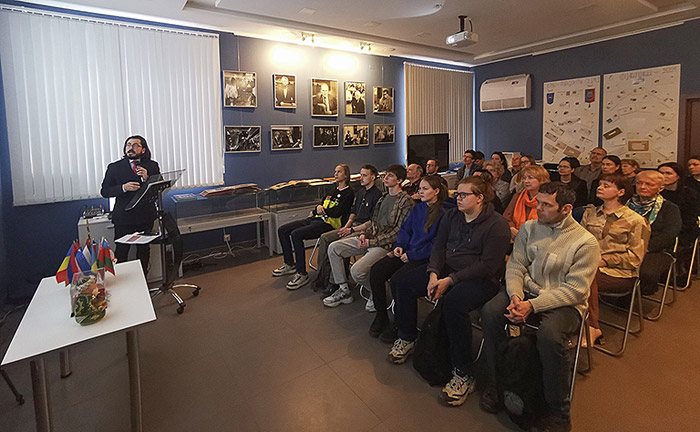
Electronic english version since 2022 |
The newspaper was founded in November 1957
| |
In the JINR Museum
The accumulated experience is priceless
On JINR's Birthday, the results of the Institute's activities in the field of scientific achievements are traditionally summed up. Over these years, JINR has become a platform for the development of unique physical facilities, the birth of bold theories and brilliant experiments.
A historical and scientific seminar in the JINR Museum on the eve of the 68th anniversary of the founding of the Institute was dedicated to this topic. "From "East" to "United" - this is what Advisor to JINR Director for International Cooperation Irek Suleymanov called his lecture. The lecture showed the difficult path that our Institute, its founders and the entire staff had traveled from the concept to the implementation of "scientific diplomacy," an idea completely innovative at that time. JINR became the flagship of "scientific diplomacy", the calling card of the USSR during the rise of the "Iron Curtain" in the late 1950s of the last century. Heads of state, representatives of influential non-governmental organizations - the UN, UNESCO, the World Peace Organization, writers and journalists from different countries flocked to Dubna to learn about the new model of scientific organization.
In Irek Suleymanov's lecture, focus was on theoretical issues. The speaker emphasized the difference between the terms "international cooperation" and "science diplomacy". If in the first case mainly professional cooperation is assumed, then in the second case there is a broader concept with components of political, social and even ideological influence. The speaker cited as an example a statement by British Prime Minister Henry Macmillan that visited Dubna in 1959, about the "Dubna Model" that developed "an atmosphere of completely free exchange of information between all nations."
Irek Suleymanov compared JINR with CERN, the European Organization for Nuclear Research in Geneva that was developed by 11 Western countries in 1954, one might say in an "open field". Meantime, JINR obtained free of charge from the Soviet Union two institutes, well equipped and staffed with highly qualified personnel - people from EFLAN and INP. Of course, JINR became attractive to physicists; one could only envy such an experimental base. A cooperation agreement with JINR was signed by 11 socialist countries. The same as at CERN. Was it coincidence?

The lecture aroused the interest of the seminar participants. The speaker was asked questions not only about history, but also about the current state of affairs. In particular, about contacts with CERN, about the fate of joint projects.
Answering questions from the participants, Irek Suleymanov noted that JINR employees that participate in major CERN projects currently work there, although the total number of Russian scientists has decreased significantly.
When asked about the significance for the world of the Pagoush movement of scientists - for disarmament, security and scientific cooperation, Irek Suleymanov noted the recent increased activity of this once influential organization.
The lecture was attended by students of the Dubna University, JINR staff and veterans, as well as the citizens of Dubna.
From the reaction of the participants, it was clear that the issues raised in the lecture were relevant and aroused the keen interest of those present.
Nadezhda KAVALEROVA